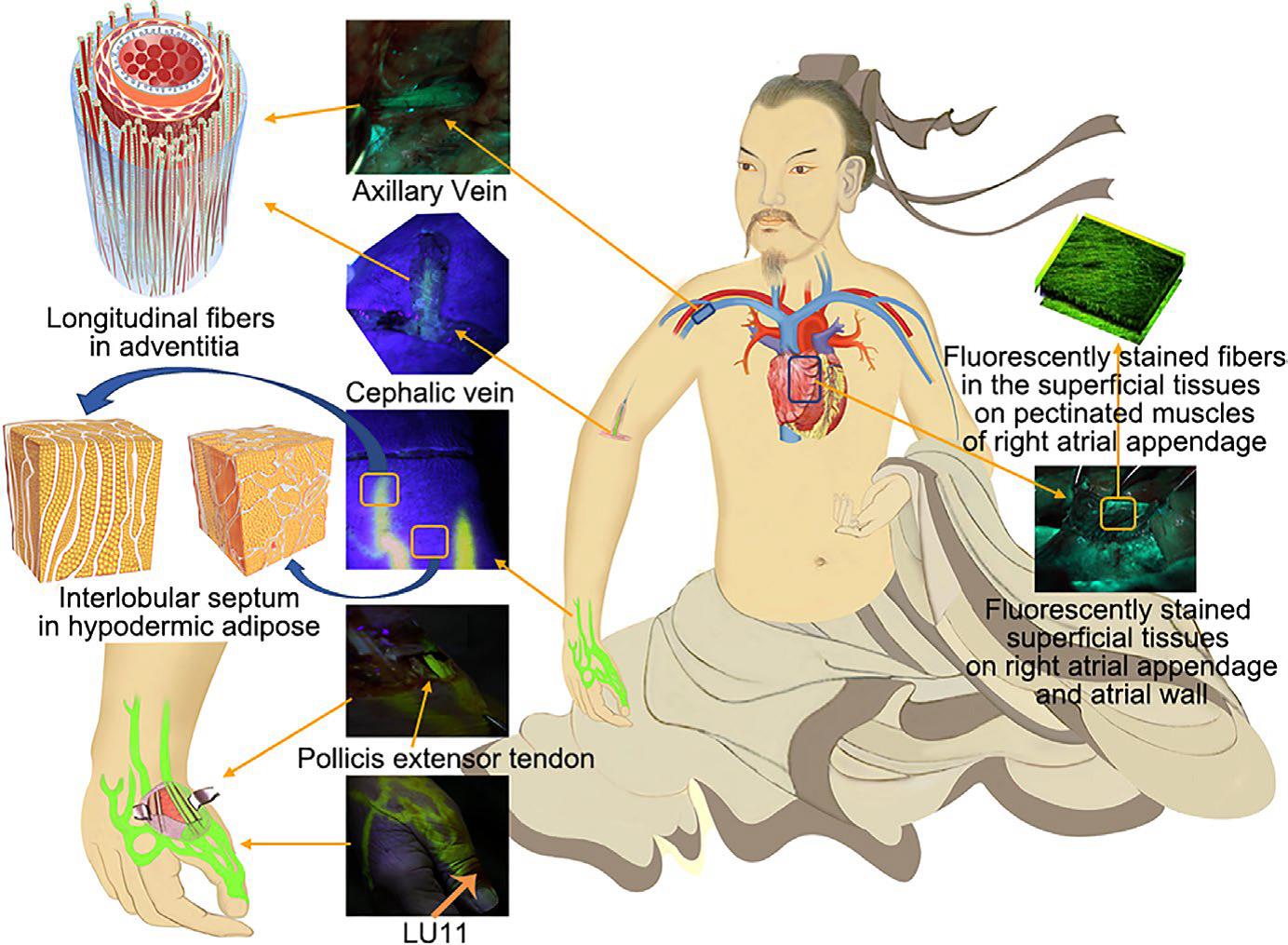An extravascular fluid transport system based on structural framework of fibrous connective tissues in human body
Author::Li, HY (Li, Hongyi); Yang, CQ (Yang, Chongqing) ; Yin, YJ (Yin, Yajun); Wang, F (Wang, Fang); Chen, M (Chen, Min); Xu, L (Xu, Liang) ; Wang, NL (Wang, Naili); Zhang, D (Zhang, Di) ; Wang, XX (Wang, Xiaoxia); Kong, YY (Kong, Yiya); Li, Q (Li, Qing) ; Su, S (Su, Si) ; Cao, YP (Cao, Yupeng); Liu, WT (Liu, Wentao) ; Ao, Z (Ao, Zhuo); Dai, LR (Dai, Luru) ; Ma, C (Ma, Chao); Shang, LJ (Shang, Lijun) ; Han, D (Han, Dong); Ji, FS (Ji, Fusui) ; Li, H (Li, Hua)
Objective Interstitial fluid in extracellular matrices may not be totally fixed but partially flow through long-distance oriented fibrous connective tissues via physical mechanisms. We hypothesized there is a long-distance interstitial fluid transport network beyond vascular circulations. Materials and methods We first used 20 volunteers to determine hypodermic entrant points to visualize long-distance extravascular pathway by MRI. We then investigated the extravascular pathways initiating from the point of thumb in cadavers by chest compressor. The distributions and structures of long-distance pathways from extremity ending to associated visceral structures were identified. Results Using fluorescent tracer, the pathways from right thumb to right atrium wall near chest were visualized in seven of 10 subjects. The cutaneous pathways were found in dermic, hypodermic and fascial tissues of hand and forearm. The perivascular pathways were along the veins of arm, axillary sheath, superior vena cava and into the superficial tissues on right atrium. Histological and micro-CT data showed these pathways were neither blood nor lymphatic vessels but long-distance oriented fibrous matrices, which contained the longitudinally assembled micro-scale fibres consistently from thumb to superficial tissues on right atrium. Conclusions These data revealed the structural framework of the fibrous extracellular matrices in oriented fibrous connective tissues was of the long-distance assembled fibres throughout human body. Along fibres, interstitial fluid can systemically transport by certain driving-transfer mechanisms beyond vascular circulations.
